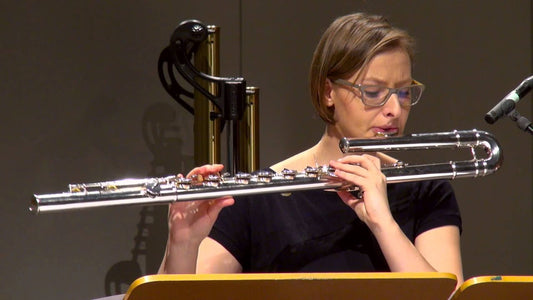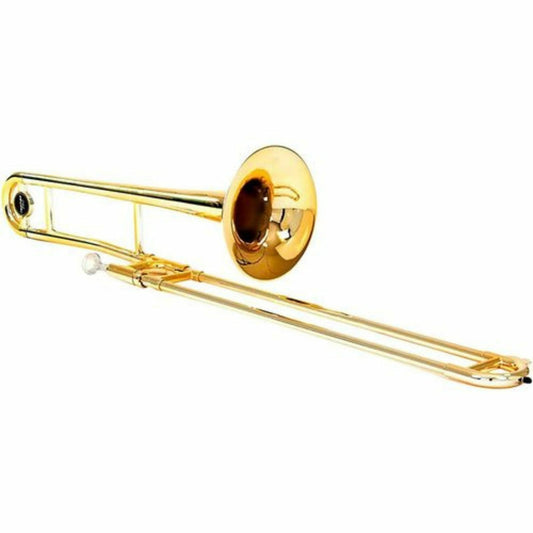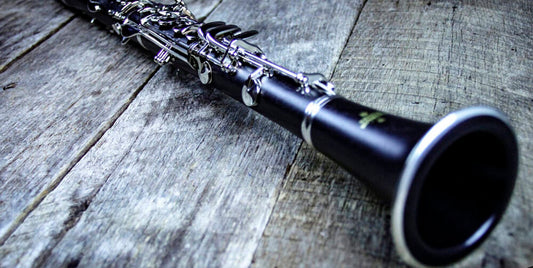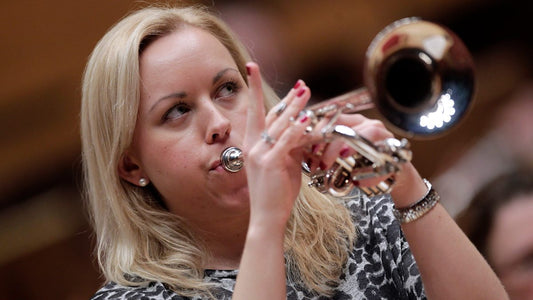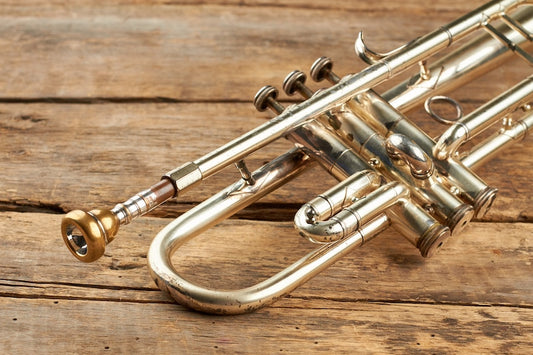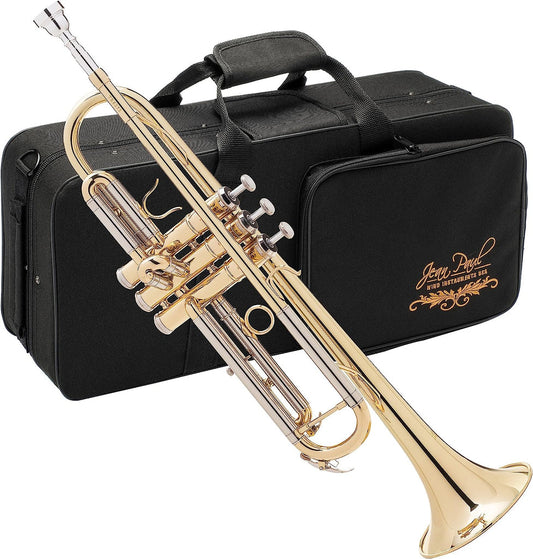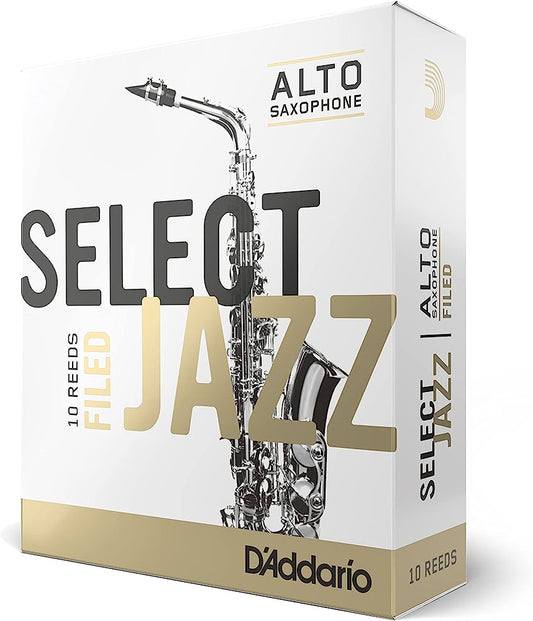
"Looking" How to Choose Trumpets, Blouses of 10 Famous Jazz Artists
Of course, buying the same saxophone, bellows, and trumpets that John Coltrane used won't make you play exactly like him.
But checking the setup your favorite sax player has chosen can be an important step towards getting the tone and style you want.
In this article, we've selected 10 great jazz musicians, from Charlie Parker and Ben Webster to modern players like Joe Lovano and Gerald Albright, and studied how they used saxophones, bellows, and bells. and some trumpets.
Every saxophonist knows the importance of a good setup: the right equipment can help you realize the sound you're striving for.
Like most musical instruments, there are many saxophone manufacturers, each with different selling points and strengths.
When it comes to choosing a bellows for jazz, things are even more complicated: wide or narrow opening? rubber or metal?
Even trumpets play an important role in pursuing that jazz sound. Hard or soft? Which brand?
Some saxophonists endlessly experiment with different options to find the perfect 'setup' and sound.
And while there are now more choices than ever, our favorite players throughout jazz history have struggled with these questions, too.
But while it's important to remember that sounds and tunes ultimately come from the player and not the device, finding out which gear they're actually using can be really fun.
This article can provide insight into some of the mechanics of how our trumpeters play, and can also suggest what kind of setup you might want to choose for yourself, depending on your preferences. the way you want to sound and the style you want.
So here's a list of ten great saxophonists, with information on their favorite trumpets, bellows, and saxophones.
We put together this article by researching interviews, articles, and testimonials from the saxophone players mentioned.
If you come across any information that you feel is incorrect, please let us know in the comments and we will update.
And, of course, always do your own research (both online and by experiment) before buying anything!
Charlie Parker
Due to his addiction to "drugs", Parker often carried his saxophone, and often played with a borrowed or bought cheap trumpet.
Charlie Parker is sometimes remembered with a distinctive ivory bellows: the Brilhart Tonalin Streamline. Charlie Parker is also known to have played the Brilhart Ebolin, the Runyon Model 22 and, perhaps surprisingly for an alto player in his style, a metal bellows manufactured by Selmer.
He used 4 very hard trumpets, although he may have started using softer trumpets in the 1950s.
Parker became famous before Selmer began to dominate the jazz saxophone market, and the saxophones he played include the Conn 6M, King Super 20, Buescher 400, and the famously white acrylic Grafton alto, heard on Jazz at Massey Hall.
Charlie Parker is testament to the fact that, with hard work and enough practice, you can play any saxophone and setup well!
John Coltrane
Coltrane achieved his distinctive, harsh but beautiful tenor saxophone sound with the help of a metal bellows.
He experimented with many Otto Link Tonemasters, noted for their projection and durability, often featuring a relatively narrow 5 or 6 facet, paralleled by fairly stiff Rico trumpets.
In his quest for the desired sound, Coltrane apparently had many bellows worked and modified by Frank Wells, a technician in Chicago.
John Coltrane initially played the Selmer Super Balanced Action tenor, before switching to Selmer Mark VI, for which he recorded his masterpiece, A Love Supreme. We have included this album in our list of the 10 greatest albums of all time by John Coltrane.
The Selmer Mark VI saxophone is the most famous trumpet of all time: enjoyed by countless famous players, it was manufactured between 1954 and 1974, and most modern saxophones are based on design and mechanics. its regime.
For those looking to combine Selmer's classical tradition with modern manufacturing, it's worth checking out the Selmer Reference 54, designed in the style of the 1954 Mark VI.
Joshua Redman
Modern tenor saxophone giant Joshua Redman went against John Coltrane and switched from the Selmer Mark VI (formerly belonging to his father, the great Dewey Redman) to the Selmer Super Balanced Action.
The Super Balanced Action was Selmer's flagship trumpet from 1946 to 1953, and it remains a favorite among classical sax fans today.
"There's something emotionally charged about it, a little deeper and a larger range of modulation," says Redman. The Mark VI has a slightly more focused and powerful sound, but may not be as expansive.”
He also uses Alexander 3.5-intensity 'NY' clippers and classic hard rubber Otto Link bellows with a 7 or 7* face.
Michael Brecker
Brecker played the Selmer Super Balanced Action tenor saxophone early on, before buying a Selmer Mark VI (manufactured 1960, serial number 86xxx) with a distinctive silver neck, which he used almost exclusively. for the rest of his career.
He played with various metal Otto Link and Dukoff bellows until he suffered a throat injury, after which Guardala designed a less durable piece for him: the brand continued to sell the 'MB' model to him. to this day.
He used medium strength La Voz trumpets, which can blow quite freely.
Fans often ask Brecker about his setup, but he always wanted to emphasize that he's not too gear-obsessed and that players should just find something that works for them.
Ben Webster
Webster was the main voice of the swing era and the star of the Duke Ellington Orchestra's version of the classic 'Blanton-Webster'.
He achieved his big, vibrating sound on a small-head and large-chamber metal Otto Link, along with durable 3.5-inch Ricoh trumpets. He started with tenor Conn New Wonder.
Conn became the first saxophone manufacturer in the United States in 1888, and was probably the most popular brand before Selmer took the throne.
Some of their elaborately carved models are still favorites, though they will be a bit strange to players accustomed to ergonomic modern trumpets.
Ben Webster later changed to the Selmer Balanced Action which the company produced from 1935 to 1947 before making the Super Balanced Action and later the Mark VI.
While the BA is no longer in production, the Selmer Reference 36 is designed in a similar style to the Balanced Action of 1936.
Cannonball Adderley
Cannonball played a Meyer NY ebonite bellows, with a number 5 opening and a medium cavity.
Meyer continues to create pieces that are popular and versatile, but their original classics are highly sought after and sell for huge amounts of money today.
Adderley combined this with the Rico #2 or La Voz Medium trumpets: this easy, unobstructed setup will contribute to his bright, soulful tone.
He played a Super 20 alto made by King, an American manufacturer, widely used by US military bands.
In the 1970s, he switched to Selmer Mark VI.
Phil Woods
Woods was originally taught by the great jazz master Lennie Tristano, and was also heavily influenced by Charlie Parker.
His style is rooted in bebop, but he has also done some notable studio work, contributing a popular pop sax solo to Billy Joel's 'Just The Way You Are'.
He played the Selmer Mark VI for many years, but in later years he became an ardent supporter of the Yamaha Custom Saxophone, after the 82ZUL model was designed in collaboration with him.
“When I brought it into the studio, there was a new inner beauty that I hadn't heard in my other trumpets. This 82ZUL is far superior.”
An interesting case of a highly respected player trading a classical trumpet for a modern saxophone.
For many years he used an unmodified New York Meyer 5M bellows with medium cavity given by a friend in the 1950s.
Now, in collaboration with the Woods family following his death in 2015, Drake's producers have created a bellows seemingly based on the exact shape of his Meyer, which they describe described as "the quintessential jazz bellows".
Woods used La Voz medium trumpets until switching to the Vandoren V16 later in his career.
Gerald Albright
Albright is on the smoother, more commercial end of the jazz spectrum and is another big name that opts for a modern, over a classical saxophone.
He has his own Gerald Albright Signature Series model made by the Salt Lake City-based company Cannonball, decorated with gems!
Albright uses a Fat Neck, also made by Cannonball, which has an octave key on the underside of the tube end and is inspired by the design of the King Super 20.
Interestingly, he uses Légère synthetic trumpets, or sometimes a medium-hard La Voz.
Although some players appreciate the consistency of the synthesizer, most advanced saxophonists still prefer the sound and feel of the traditional trumpet.
Albright plays Beechler Studio Diamond Inlay in hard rubber with 8 on alto and hard rubber Datta Theo Wanne 8 on tenor.
Stan Getz
Getz was nicknamed 'The Sound' because of his beautiful, clear tenor voice.
And though we tend to think of him as a soft, delicate saxophone player – perhaps in part due to the beautiful and sensitive solos on the famous bossa nova recordings – clearly , he really made a big sound with unbelievable performance if you hear him play live.
Getz played the Conn 10M tenor and Selmer Balanced Action saxophone early in his career, before moving on to the Selmer Mark VI from about 1957 until his death in 1991.
He plays Otto Link Tone Edg e hard rubber bellows with a 5* opening. Since the mid-1980s, he's been playing Otto Link's version of 'Early Babbitt'.
His very hard trumpets - he's known to be able to play from 3.5 to 5 pitches - plus his bellows' narrow opening will help him achieve his dark, cool sound.
He is known to dislike any 'buzz' from his trumpets and is extremely picky, often keeping only one or two in each box and discarding the rest.
Joe Lovano
Borgani, a small Italian company, designed the Joe Lovano series especially for the great American tenor, using a Pearl Silver alloy with 24k Gold keys.
“It's a really beautiful instrument and gives me a warm, vibrant sound, with dynamic range, beyond my wildest expectations. These newer trumpets are made like an older trumpet in hand-beaten brass but with a modern mechanism.
Lovano is known for his loud sound and is another person who is said to have to be heard in person to be fully appreciated in this regard.
He plays a Francois Louis bellows made from African Granidillo hardwood and has the same specifications as the Otto Link 10* that he used until 1985.
The rock-hard power of Alexander's trumpets, combined with the wide bellows opening, is sure to make his setup feel like quite a chore!
Thanks for checking out this tutorial on how to set up some great jazz saxophones, and we hope it provides more insight when choosing your own saxophone, trumpet, or bellows!
Of course, many saxophone players change their settings and preferences over the course of their careers, so if you think we've missed something or should modify any of these, have fun. Feel free to share in the comments section below…
See more:
